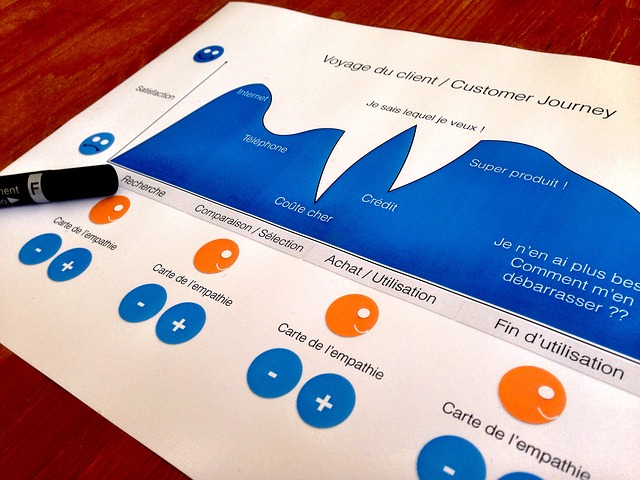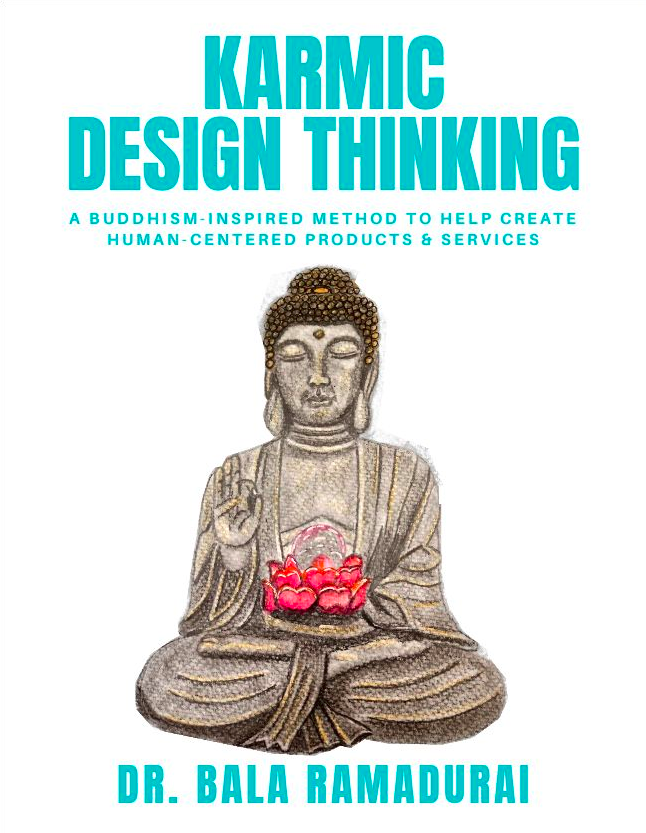By vivek | 2017-05-24
Vivek Swaminathan is my student from the MBA Innovation and Entrepreneurship program at Symbiosis Institute of Business Management, Pune, India. He is my first guest blogger. Hope you enjoy the post as much as I did!
The construction of a Customer Journey Map is an essential component of Karmic Design Thinking. The objective of which is to gain a better understanding of the context of potential customers, it helps in getting more clarity with regards to the problems faced by a user and encourages a human centred approach to problem solving.
 A customer journey map (in French) describing the different elements of a customer journey. We will discuss in greater detail, later, in another post
A customer journey map (in French) describing the different elements of a customer journey. We will discuss in greater detail, later, in another post
My first encounter with this approach to problem solving was in one of Dr. Bala Ramadurai’s classes. As a part of our assignment we were asked to construct the customer journey map for the canteen on our campus. As a result, we began the process by discussing our own personal or collective experiences at the canteen; there were quite a few pain points which needed to be addressed.
Amongst them, the que to place the order was the most common among all the team members. This was because there was only a single counter to cater to multiple lines of students, who visited the canteen during their breaks which did not last more than half an hour at a time. This led to a delay right from the outset which set off a chain reaction in the entire process of getting food or beverages from the canteen.
The hygiene levels maintained and the lack of change to give to students who placed orders can be described as honourable mentions in the problems faced by customers. I would like to emphasise at this point that our task did not end with problem identification but went into a solution generation phase as well, albeit in a more simplified and basic manner with the objective of understanding the entire cycle of problem solving.
Some of the solutions or quick fixes we recommended based on our inference of the customer’s pain points were:
- Staggered breaks for classes to reduce the chances of multiple lines formed by students.
- A more obvious one, open more counters!
- Ensure the availability of smaller denominations of notes or provide options to make payments in a cashless manner.
This entire exercise helped me get a better perspective that is, it altered my approach towards generating a solution. I applied the process for another situation as well, which is involved with the problems in grass root level sports in India. Being a player myself and based on personal interactions with other amateur and professional sportsmen I was able to draw a different conclusion based on the customer journey map I constructed. In short, my focus shifted from the lack of infrastructure to the culture for sports per se.
I would like to conclude by stating that the customer journey map is definitely a tool every student should understand, as it is applicable in multiple solutions and it can provoke a person to analyse a problem from the perspective of your target audience.






